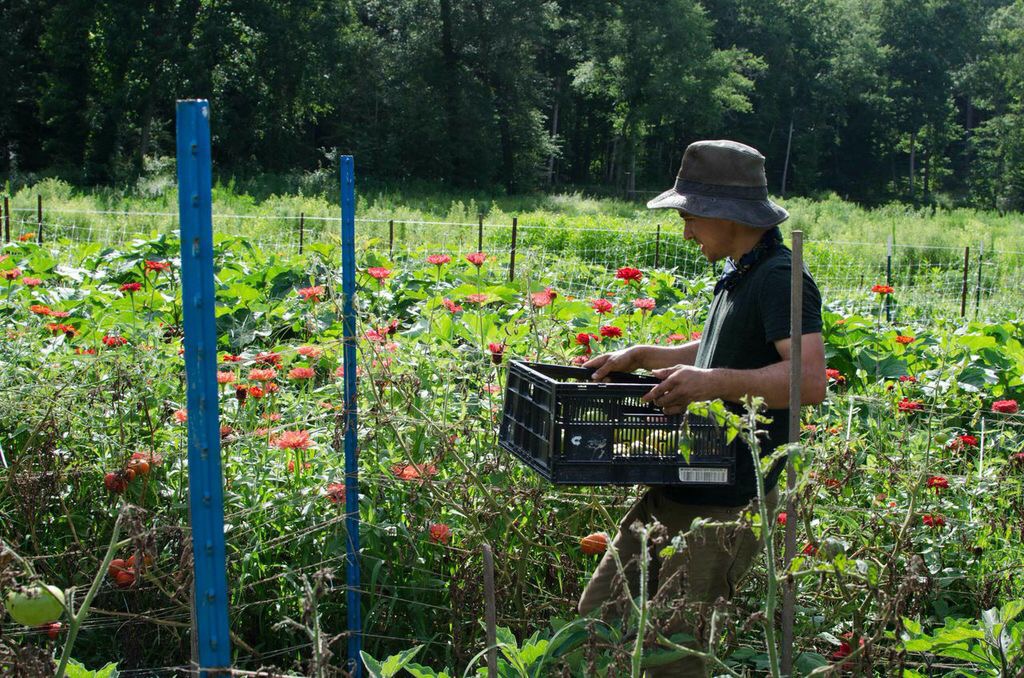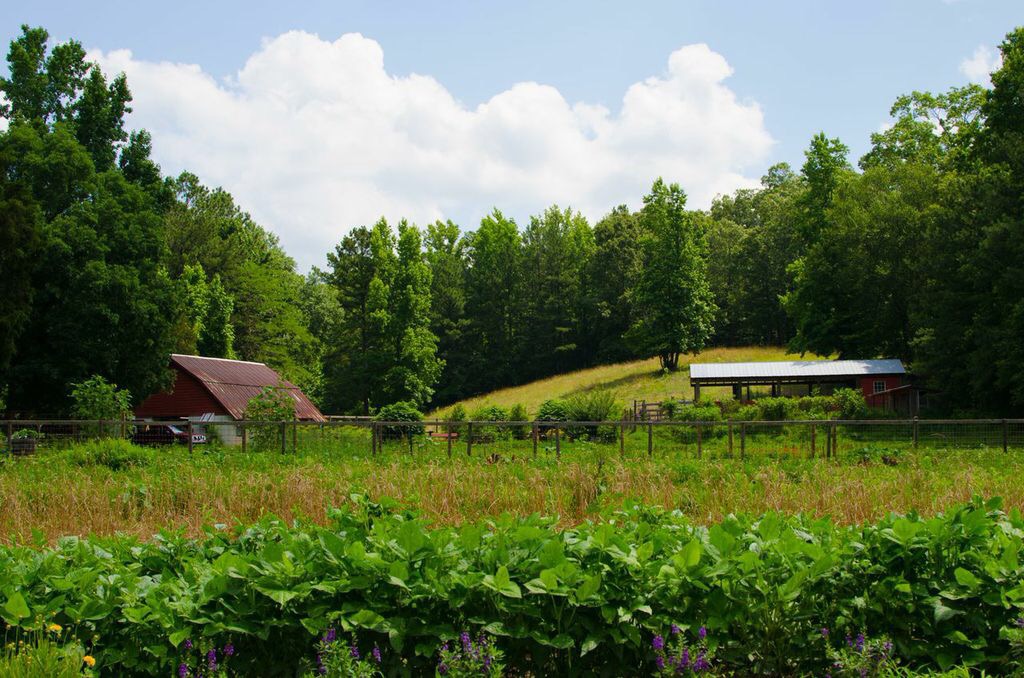by Kenan Hill
 The photos are all from a workday at Skylight Farm in Douglasville, Georgia–a CNG farm.
The photos are all from a workday at Skylight Farm in Douglasville, Georgia–a CNG farm.
Resolutions are not something I’ve done well with in the past, but in the last few years I’ve found my stride in resolution-keeping. It is as simple as making them food resolutions (though not the crazy fad diet or cleanse kind). In 2013, I resolved to only buy seasonal produce whenever possible for a whole year. That led me to shopping at local farmers markets, which in turn opened the door to new friends, a new career path, and to me finding my passion: learning about and educating others about sustainable food.
Last year I made the amorphous goal to “make a bigger commitment to local food.” After a year of trying to live that out, I thought it’d be helpful to share some concrete ways you, too, can make that commitment in 2015.
1. Shop at a local farmers market.
This is an obvious choice, but a good place to start. Each time you choose to shop at a local farmers market, you’re supporting the farmers themselves, your community, and the environment.
2. Look for “local” tags at the supermarket.
Many supermarkets are making an effort to carry more locally grown or produced items. Look for a tag indicating the origin or even a whole section of local goods in some stores.
3. Support a food-related cause.
There are a multitude of food-related nonprofits and groups that you can support with your time, money, or skills. Some, like Wholesome Wave (https://www.wholesomewave.org), double food stamps (SNAP benefits) at local farmers markets, while others, like The Edible Schoolyard Project (http://edibleschoolyard.org/network), build edible education curricula in schools.
4. Work on a farm for a day.
One thing that’s deepened my commitment to sustainable food is seeing firsthand the toil that goes into planning, planting, growing, harvesting, and processing on a farm. You can ask around at your local farmers market if anyone is planning to host a volunteer work day or check with a local non-profit or city organization—I would ask Georgia Organics, for example. Joining Crop Mob (http://cropmob.org/find-a-mob-near-you) is another way to connect with like-minded people and spend time volunteering on farms.
5. Join a CSA.
Community Supported Agriculture (“CSA”) is a model of pledging support to a farm by purchasing a share of the anticipated harvest at the beginning of the season. Members usually receive a weekly bag of produce, meat, flowers, or whatever else the farm may grow. Not only does a CSA program help farmers plan ahead and reduce risk, but it’s also a great way to sample new items you might not otherwise try.
6. Eat seasonally.
Eating seasonally doesn’t necessarily mean the items are locally or regionally grown, but it’s much more likely. Ingredients that are currently in season are typically better tasting, more nutritious, less expensive, and require much less fuel (negative environmental impact) to get to you.
7. Visit a farm, orchard, or berry patch.
Visiting a u-pick strawberry or blueberry patch, apple orchard, or pumpkin farm can be a fun family activity that supports local farmers.
8. Eat at restaurants that source locally.
Let the chefs do the work for you. There are restaurants all around the world that make a point to support their local farmers. Many farm-to-table restaurant menus will indicate the source of their ingredients.
9. Purchase goods from the Farm2me marketplace.
Let’s not forget the good folks that brought us all to this corner of the internet. Click on over to the Farm2me homepage and scroll down to see some of the incredible goods they have to offer. (*editor’s note: you can change these instructions—this seemed like the easiest way to get to the marketplace from the blog.)
I hope you join me in exploring and supporting local food this year!
Feel Free to Email Us: Team@Farm2.me**
Kenan Hill is an Atlanta-based artist and food blogger invested in spreading the word about sustainable agriculture and good food. She shares seasonal recipes on Kitchen1204.





